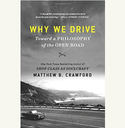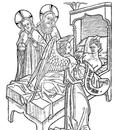Jean Blair (ed.) Packard,
In Their Own Words: Women Healed
(Pope Paul VI Institute Press, 2004, 248 pages).
In the wake of the controversy over the Department of Health and Human Services mandate requiring all insurance companies to provide free coverage for contraception and sterilization, regardless of religious objection, Catholic teaching on sexuality has been subject yet again to intense public scrutiny. Unsurprisingly, many officials, media personalities and members of the general populace have once again pegged the Church's teaching against contraception as outdated, sexist theology. What is notable, however, is the growing consensus that the Church's teaching is bad medicine that endangers women's health.
This view has gained traction with women largely because their doctors have come to regard contraceptives and in-vitro fertilization (IVF) fertility treatments as essential tools of reproductive health care. Oral contraceptives are prescribed not just for birth control, but also for acne, cramps, endometriosis, and more. Women are quickly and routinely referred for IVF (costing $10,000 or more per cycle), often being told that it is their only hope for achieving a full-term pregnancy. The morality of such practices is no longer questioned. Their use is justified by the fact that they supposedly "work" for their intended purpose. Many go so far as to argue that to deprive women of these solutions for family planning and infertility is to deprive them of their liberty, health, and happiness.
But the reality is this: alternative, more effective and morally acceptable treatments exist. In Their Own Words: Women Healed presents a radical new vision and practice of women's health care called NaPro TECHNOLOGY (Natural Procreative Technology), developed by Dr Thomas Hilgers. The book - compiled and edited by Jean Blair Packard, a former patient and long-time employee of Hilgers - relays the personal stories of fifty women who struggled with various reproductive health issues before they received NaPro treatment from Hilgers at the Pope Paul VI Institute in Omaha, Nebraska.
NaPro TECHNOLOGY is a set of innovative medical and surgical approaches that are not only theologically sound, but are also incredibly effective. Unlike some mainstream care which seeks to treat symptoms such as infertility or irregular menstrual cycles, NaPro addresses the fundamental medical issues causing the symptoms. By going to the root of the problem, NaPro has been shown to be 1.4 to 2.8 times more successful in achieving pregnancy than currently-used artificial reproductive technologies and has high success rates for treating other gynecological problems as well.
Hilgers developed NaPro TECHNOLOGY through decades of research conducted in response to Humanae Vitae's call to doctors, researchers, and medical specialists to "consider as their proper professional duty the task of acquiring all the knowledge needed" regarding reproductive health in order to give women the highest level of care, in accordance with the dignity of the human person. The result is a new women's health science that monitors and maintains a woman's reproductive and gynecological health using the CREIGHTON MODEL FertilityCareTM System of natural family planning. Women chart the biological markers of their fertility, and Hilgers (along with a growing number of doctors and healthcare professionals around the world) uses this information to help women space their children or achieve pregnancies by treating their health problems through hormone therapy, medication, and surgery. NaPro is "natural" because its primary goal is to restore a woman's reproductive health through proper diagnosis and treatment of the underlying gynecologic issues.
NaPro extends beyond the treatment of infertility. Packard gathered and arranged testimonies regarding six additional topics: previous miscarriage, pre-term birth, premenstrual Syndrome (PMS), postpartum depression, and general health problems. There is also a section dedicated to the stories of women who used the CREIGHTON MODEL FertilityCareTM System to space children. Each section begins with a brief commentary by Hilgers explaining the symptoms, diagnoses and treatments and is followed by testimonies of women who were treated for the issue.
The stories are powerful and easy to read. Each woman had a different path leading to the Pope Paul VI Institute. Some were Catholic women struggling to find morally acceptable treatment for their health problems. Others were patients who had unsuccessfully tried mainstream treatments. What they all have in common is their gratitude to a medical institution that treated them with dignity. One woman, Stephanie, described her experience as an effort to "take into account the clues that my body seemed to be providing, and put the pieces together in an effort to facilitate health, not just pregnancy."
And the results are striking. Hilgers' patient, Amy, suffered from severe episodes of high fever, diarrhea, vomiting, and blinding pain. Every doctor she saw recommended oral contraceptives, which she was reticent to take, and painkillers, which did little to help her through her episodes. At the Institute, Amy had a different experience: "I finally felt respected and knew that someone listened to me and wanted to get to the root of my problems." Hilgers performed surgery to remove extensive endometriosis and cysts on her ovaries and performed an ovarian wedge resection. Amy now has three children and is pain-free.
It is often argued that Church teaching must be abandoned in order to provide women quality care. NaPro shows that when doctors and healthcare professionals are obedient to this teaching, deeper physical, emotional, and spiritual healing can result, as Hilgers' patients attest (see e.g. p. 107).Humanae Vitae does not sentence women to a life of suffering. Rather, it calls caregivers to a higher standard of medicine which both respects the dignity and truth of the human person and provides the highest quality of care within the parameters of that truth.
I highly recommend this book to anyone interested in women's health from a moral, medical, or simply practical point of view, professional and layperson alike. I would also recommend it to anyone interested in gaining a vision of a field of medicine transformed by obedience to the truth of the human person. NaPro faces an uphill battle to loosen the grip that the lucrative contraceptive and fertility industries hold on women's reproductive health care. However, I hope that all who care about women will pause to listen to the voices of the women healed by NaPro technology.
Caitlin Dwyer, a 2010 graduate of the John Paul II Institute for Studies on Marriage and Family, is the mother of three children and a theology instructor at Thomas More University in Kentucky.



